Research
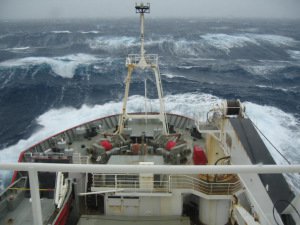 Our research exploits novel observations and technologies to investigate the dynamics of the ocean circulation and its role in the climate system. The research problems that we tackle span many different topics – from the large-scale meridional overturning circulation to small-scale oceanic turbulence. An overview of our research is given below.
Our research exploits novel observations and technologies to investigate the dynamics of the ocean circulation and its role in the climate system. The research problems that we tackle span many different topics – from the large-scale meridional overturning circulation to small-scale oceanic turbulence. An overview of our research is given below.
Topics
Dynamics of the large-scale ocean circulation
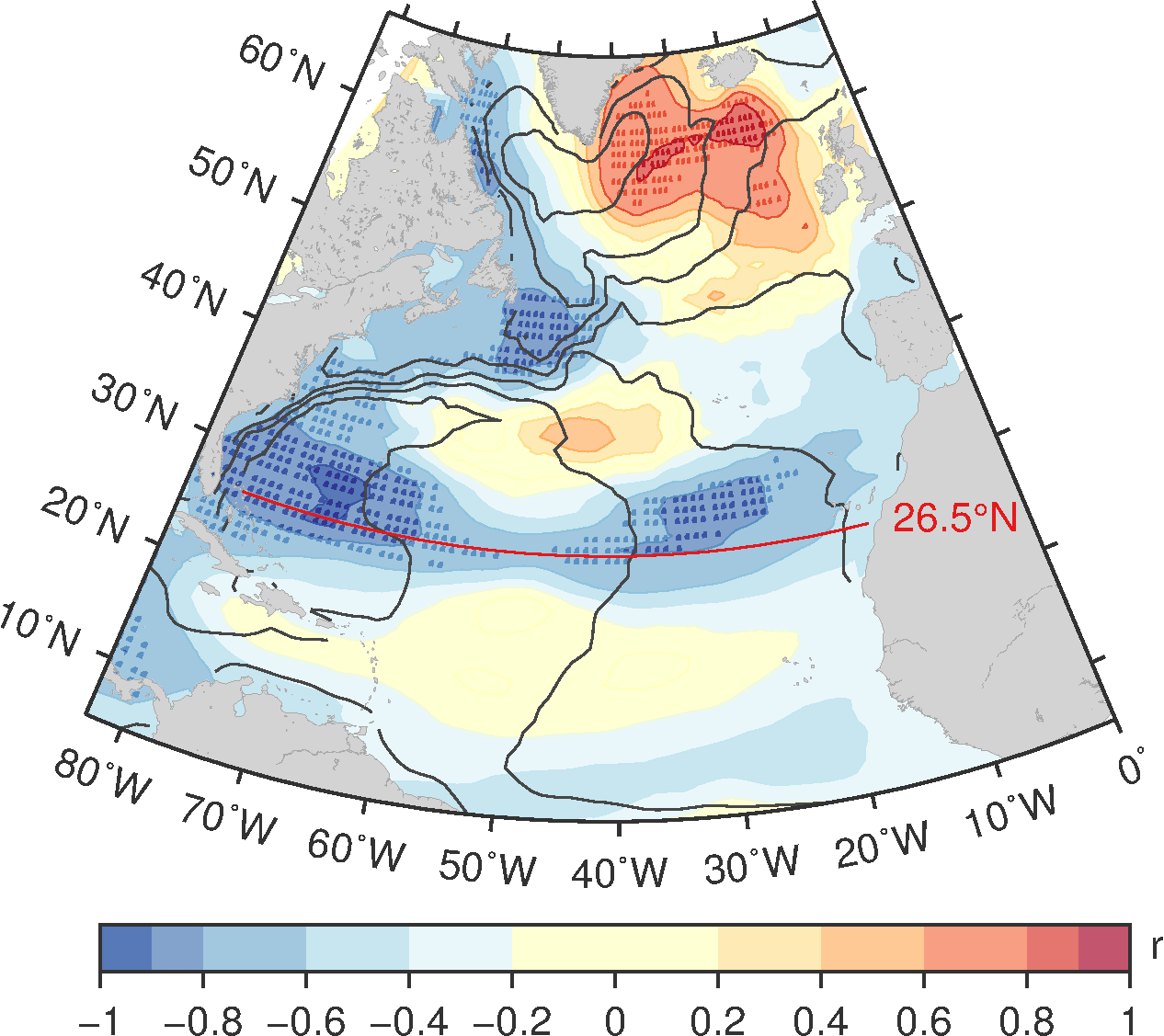 Our research combines targeted in situ measurements and satellite observations of the large-scale ocean circulation to assess the circulation’s climatic variability and unravel its controlling dynamics.
Our research combines targeted in situ measurements and satellite observations of the large-scale ocean circulation to assess the circulation’s climatic variability and unravel its controlling dynamics.
-
BLT Recipes - Bottom Boundary Layer Turbulence and Abyssal Recipes (NERC / NSF)
-
RAPID - RAPID Climate Change (NERC / NSF / NOAA)
-
TEA-COSI - The Environment of the Arctic: Climate, Ocean and Sea Ice (NERC)
-
ANDREX - Antarctic Deep Water Rates of Export (NERC)
-
ASBO - Arctic Synoptic Basin-wide Oceanography (NERC)
Meso- and submesoscale ocean dynamics
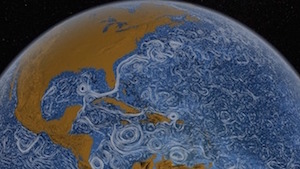 One of the key research goals of our group is to unravel the dynamics of meso- and submesoscale flows and how they shape the large-scale ocean circulation. To this end, we perform targeted process experiments using a variety of measurement technologies, and guide our interpretation of the observations with idealised and realistic models.
One of the key research goals of our group is to unravel the dynamics of meso- and submesoscale flows and how they shape the large-scale ocean circulation. To this end, we perform targeted process experiments using a variety of measurement technologies, and guide our interpretation of the observations with idealised and realistic models.
-
R-GEMS - Building Resilience in Galapagos Ecosystem Management to Severe Climate Change (Royal Society)
-
P-GUP - Predictability of the Galápagos Archipelago Upwelling Plume (Royal Society)
-
MerMEED - Mechanisms responsible for Mesoscale Eddy Energy Dissipation (NERC)
-
iSTAR - Ice Sheet Stability (NERC)
-
OSMOSIS - Ocean Surface Mixing, Ocean Submesoscale Interaction Study (NERC)
Ocean mixing
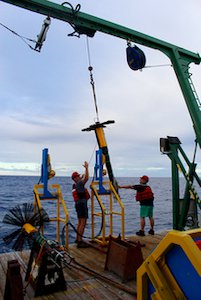 A central focus of our group is the study of small-scale turbulence in the ocean. Our work uses cutting-edge technologies to measure turbulent flows, and develops new analytical and theoretical approaches to document and investigate the finescale controls and large-scale impacts of small-scale turbulence.
A central focus of our group is the study of small-scale turbulence in the ocean. Our work uses cutting-edge technologies to measure turbulent flows, and develops new analytical and theoretical approaches to document and investigate the finescale controls and large-scale impacts of small-scale turbulence.
-
BLT Recipes - Bottom Boundary Layer Turbulence and Abyssal Recipes (NERC / NSF)
-
DynOPO - Dynamics of the Orkney Passage Outflow (NERC / NSF)
-
MerMEED - Mechanisms responsible for Mesoscale Eddy Energy Dissipation (NERC)
-
RidgeMix - A nutrient and carbon pump over mid-ocean ridges (NERC)
-
iSTAR - Ice Sheet Stability (NERC)
-
OSMOSIS - Ocean Surface Mixing, Ocean Submesoscale Interaction Study (NERC)
-
DIMES - Diapycnal and Isopycnal Mixing Experiment in the Southern Ocean (NERC / NSF)
-
SOFine - Southern Ocean Finestructure (NERC / Australian Research Council)
Polar ocean circulation
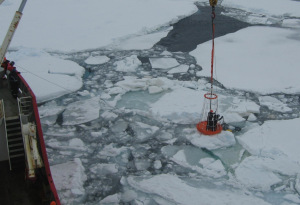 The study of the polar ocean circulation and how it performs its critical role in the climate system is one of our group’s major research areas. Our work combines targeted process experiments with quantitative investigations of the high-latitude large-scale circulation in some of the most challenging oceanic environments on Earth.
The study of the polar ocean circulation and how it performs its critical role in the climate system is one of our group’s major research areas. Our work combines targeted process experiments with quantitative investigations of the high-latitude large-scale circulation in some of the most challenging oceanic environments on Earth.
-
SO-CHIC - Southern Ocean Carbon and Heat Influence on Climate (ERC H2020)
-
Quantifying Human Influence on Ocean Melting of the West Antarctic Ice Sheet (UKRI-JSPS)
-
TERIFIC - Targeted Experiment to Reconcile Increased Freshwater with Increased Convection (ERC)
-
DynOPO - Dynamics of the Orkney Passage Outflow (NERC / NSF)
-
iSTAR - Investigating the stability of the West Antarctic Ice Sheet: Processes and variability of ocean heat transport toward ice shelves in the Amundsen Sea Embayment, (NERC)
-
TEA-COSI - The Environment of the Arctic: Climate, Ocean and Sea Ice (NERC)
-
DIMES - Diapycnal and Isopycnal Mixing Experiment in the Southern Ocean (NERC / NSF)
-
SOFine - Southern Ocean Finestructure (NERC / Australian Research Council)
-
Seagliders in the Labrador Sea - NOAA
Using Seagliders to investigate deep convection and the spring phytoplankton bloom in the Labrador Sea. -
ANDREX - Antarctic Deep Water Rates of Export (NERC)
-
SOFINE - Southern Ocean Finestructure (NERC)
-
ASBO - Arctic Synoptic Basin-wide Oceanography (NERC)
Oceanic carbon cycle
We are interested in understanding how the interplay between physical and biogeochemical processes regulates the oceanic carbon cycle and its role on the climate system. Our research tackles this problem with measurements of the ocean on all scales and numerical models of varying complexity.
-
SO-CHIC - Southern Ocean Carbon and Heat Influence on Climate (ERC H2020)
-
RidgeMix - A nutrient and carbon pump over mid-ocean ridges (NERC)
-
ANDREX - Antarctic Deep Water Rates of Export (NERC)
-
ASBO - Arctic Synoptic Basin-wide Oceanography (NERC)
Technology
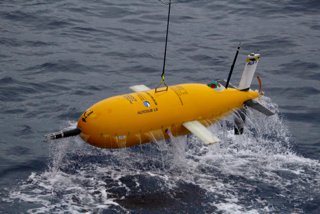 Our research exploits and develops cutting-edge marine and aerial technologies to help us advance our understanding of key oceanic phenomena. Some examples include:
Our research exploits and develops cutting-edge marine and aerial technologies to help us advance our understanding of key oceanic phenomena. Some examples include:
-
ALADDIN - Assuring Long-term Autonomy through Detection and Diagnosis of Irregularities in Normal operation (Lloyd’s Register)
-
DynOPO - Dynamics of the Orkney Passage Outflow (NERC / NSF)
In the DynOPO project, we obtained high-resolution measurements of a deep western boundary current conveying Antarctic Bottom Water through a narrow topographic cleft – the Orkney Passage – with the autonomous underwater vehicle Autosub Long Range (aka Boaty MacBoatface) instrumented with a MicroRider. -
FreshWATERS - Fresh ways of Targeting and Employing Robotic Systems (NERC)
In FreshWATERS, we are developing an unmanned aerial deployment mechanism for ocean drifters. -
NZOC - Net Zero Oceanographic Capability (NERC)
Scoping project to plan for a future of net zero carbon oceanographic research. -
OPSARS - Oceanography and Polar Science through Agile Robotic Systems (SMMI)
In OPSARS, we are investigating the feasibility of an unmanned observational system comprising aerial and marine vehicles. -
OSMOSIS - Ocean Surface Mixing, Ocean Submesoscale Interaction Study (NERC)
OSMOSIS used a full-year of glider deployments to supplement an array of moorings in the North Atlantic. -
Seagliders in the Labrador Sea (NOAA)
Using Seagliders to investigate deep convection and the spring phytoplankton bloom in the Labrador Sea. -
TERIFIC - Targeted Experiment to Reconcile Increased Freshwater with Increased Convection (ERC)
In the TERIFIC project, we will use full-year deployments of small ocean drifters to map the pathways of freshwater from around Greenland to the subpolar gyre. In the Labrador Sea, an autonomous surface vehicle and autonomous underwater vehicles will be used to investigate active convection and lateral mixing in the top 1000 m.
See also Publications
Active Projects
ALADDIN
Assuring Long-term Autonomy through Detection and Diagnosis of Irregularities in Normal operation (Lloyd’s Register)
The project aims to contribute to the assurance of regulations of robotic and autonomous systems by introducing novel data-drive fault detection and diagnostics methods and procedures for marine autonomous systems.
Link (external): ALADDIN project abstract
BLT
Bottom Boundary Layer Turbulence and Abyssal Recipes (NERC / NSF)
This project will assess the role of turbulent mixing in the ocean’s bottom boundary layer in driving the upwelling limb of the meridional overturning circulation.
Link: BLT Recipes overview
NZOC
Net Zero Oceanographic Capability (NERC)
NZOC (Net Zero Oceanographic Capability) is a £250k scoping project funded by NERC to inform planning for the future low carbon oceanographic research capability in line with UKRI’s objectives of becoming a net zero organisation by 2040. NOC’s National Marine Facilities (NMF) division has been selected to lead a team of national experts investigating the drivers and enablers of future oceanographic research.
The project includes 6 work packages investigating future: (i) science need, (ii) policy & regulation, (iii) ship technologies, (iv) Marine Autonomous Systems (MAS), (v) sensor systems & networks, and (vi) data ecosystems.
Link (external): NZOC website
Quantifying Human Influence on Ocean Melting of the West Antarctic Ice Sheet
(UKRI – JSPS scheme, PI: Paul Holland, co-I: Alberto Naveira Garabato)
Warm oceanic waters are driving rapid melting of the West Antarctic Ice Sheet. This project will assess the mechanisms that allow warm waters to reach the ice sheet, and the extent to which the contemporary acceleration in melting can be attributed to anthropogenic emissions.
Link (external): QHIM WAIS overview
R-GEMS
Building Resilience in Galapagos Ecosystem Management to Severe Climate Change (Royal Society)
The R-GEMS project will define, quantify and provide mechanistic understanding of the processes governing the variability in the phytoplankton biomass sustaining the unique ecosystem of the Galápagos Islands’ upwelling plume. The project will also assess the most likely evolution of the main environmental controls of the regional ecosystem over the next 50 years (2020-2070).
Link: R-GEMS overview
RAPID
RAPID Climate Change (NERC / NSF / NOAA)
RAPID seeks to measure and understand the variability of the meridional overturning circulation and oceanic heat transport across 26$^o$N in the Atlantic Ocean. The project revolves around a trans-Atlantic array of full-depth moorings, maintained by U.K. and U.S. scientists since 2004. We have used these data, and auxiliary data from surface winds, sea level and ocean gravity measurements to place the in situ fluctuations measured at 26N in the context of the larger-scale ocean circulation.
Link: RAPID overview
SO-CHIC
Southern Ocean Carbon and Heat Influence on Climate funded by the ERC H2020 scheme (PI: JB Sallee, co-I: Alberto Naveira Garabato)
This project will advance our understanding of, and quantify, the variability of heat and carbon budgets in the Southern Ocean. The project will investigate the key processes controlling exchanges of heat and carbon between the atmosphere, ocean and sea ice, using a combination of cutting-edge observational and modelling approaches.
Link: SO-CHIC overview
TERIFIC
Targeted Experiment to Reconcile Increased Freshwater with Increased Convection (ERC)
TERIFIC will identify processes and timescales by which freshwater from northern high latitudes can reach and influence deep convection. Direct, seasonally-resolving observations of convective processes under the influence of surface forcing will be used to test the relative importance of different processes at determining convective intensity, and will form a benchmark for numerical simulations.
Link (external): TERIFIC overview
Past Projects
ANDREX
Antarctic Deep Water Rates of Export (NERC)
The ANDREX project investigated the role of the Weddell Gyre in driving the southern closure of the meridional overturning circulation, in ventilating the deep global ocean, and in sequestering carbon and nutrients in the global ocean abyss. ANDREX highlights include: the assessment of the overturning circulation across the Weddell Gyre and its thermodynamical controls from observations; the discovery that Antarctic Bottom Water export from the Gyre is controlled by wind forcing; and the determination of the Weddell Gyre carbon sink and its underpinning dynamics.
Link (external): ANDREX website
ASBO
Arctic Synoptic Basin-wide Oceanography (NERC)
The ASBO project addressed the storage and transport of freshwater across the Arctic Ocean using a combination of observations gathered during the International Polar Year and state-of-the-art numerical models. ASBO highlights include the first observational assessment of the ice and ocean transports of heat and freshwater across the Arctic Ocean’s gateways; and the discovery that the Arctic Ocean carbon sink is primarily driven by biogeochemical processes in Baffin Bay.
Link (external): ASBO website
DIMES
Diapycnal and Isopycnal Mixing Experiment in the Southern Ocean (NERC / NSF)
DIMES set out to test and re-define the contemporary paradigm of Southern Ocean mixing and its grip on the meridional overturning circulation. The experiment involved a purposeful tracer release to assess the large-scale rates of isopycnal and diapycnal mixing across the Antarctic Circumpolar Current (ACC), extensive measurements of small-scale turbulence in the ACC, and a mooring array to measure interactions between mesoscale eddies and the internal wave field. DIMES had several key highlights, including: the demonstration that strong turbulent mixing occurs over a wide depth range in the Southern Ocean; the association of this strong mixing with the breaking of lee waves, generated as the ACC impinges on rough topography; and the assessment of the relative roles of isopycnal and diapycnal mixing processes in balancing the meridional overturning circulation across the ACC.
Link (external): DIMES website
DynOPO
Dynamics of the Orkney Passage Outflow (NERC / NSF)
DynOPO seeks to assess the dynamics underpinning the wind’s regulation of the properties of the Antarctic Bottom Water exported from the Weddell Gyre. The project focuses on the Orkney Passage, a narrow topographic cleft channelling much of the bottom water outflow from the Weddell Sea. DynOPO combines targeted measurements of small-scale turbulent mixing during a major research cruise, detailed surveys of the Orkney Passage with an autonomous underwater vehicle, multi-year mooring observations, and a high-resolution process model of the bottom water outflow through the passage.
Link: DynOPO overview
FreshWATERS
Fresh ways of Targeting and Employing Robotic Systems (NERC)
In FreshWATERS, we are developing an unmanned aerial deployment mechanism for ocean drifters.
Link (external): FreshWATERS overview
iSTAR
Ice Sheet Stability (NERC)
The iSTAR programme tackled the processes regulating the transport of heat and freshwater between the continental shelf break of the Amundsen Sea and the oceanic cavity beneath Pine Island Glacier, one of the fastest-melting ice shelves in Antarctica. iSTAR highlights included the first measurements of small-scale turbulence beneath the floating edges of the Antarctic Ice Sheet using an autonomous underwater vehicle, and the unravelling of how submesoscale instabilities regulate the export of meltwater from the ice shelf cavities.
Link (external): iSTAR website
MerMEED
Mechanisms responsible for Mesoscale Eddy Energy Dissipation (NERC)
MerMEED investigates the processes responsible for the widespread dissipation of oceanic mesoscale eddies at western boundaries. The project combines focussed measurements of small-scale turbulence in four short research cruises, multi-year mooring and satellite observations, and multi-month glider surveys of mesoscale eddies impinging on the continental slope east of the Bahamas.
Link (external): MerMEED overview
OPSARS
Oceanography and Polar Science through Agile Robotic Systems (SMMI)
In OPSARS, we are investigating the feasibility of an unmanned observational system comprising aerial and marine vehicles.
OSMOSIS
Ocean Surface Mixing, Ocean Submesoscale Interaction Study (NERC)
OSMOSIS investigated the range of turbulent processes controlling the evolution of the ocean surface boundary layer. A central element of the project was the deployment of an array of moorings and gliders in a mid-gyre area of the Northeast Atlantic over a full annual period. This array obtained some of the first observational evidence of the existence of a seasonal cycle in upper-ocean submesoscale instabilities, and produced unprecedented measurements of the year-long evolution of turbulent dissipation in the surface boundary layer.
Link (external): OSMOSIS website
P-GUP
Predictability of the Galápagos Archipelago Upwelling Plume (Royal Society)
P-GUP seeks to quantify and understand the meso- and submesoscale processes controlling the rate of upwelling around the Galápagos Archipelago, which plays a pivotal role in the maintenance of the iconic ecosystem of the region. In doing so, the project investigates the distinct dynamics of submesoscale flows in the equatorial ocean. The central tool of P-GUP is a submesoscale-permitting ocean circulation model of the eastern equatorial Pacific.
RidgeMix
A nutrient and carbon pump over mid-ocean ridges (NERC)
RidgeMix investigates the lifecycle of internal tides generated at the Mid-Atlantic Ridge, and their role in driving turbulent mixing of nutrients and carbon across the upper layers of the North Atlantic subtropical gyre. The project includes observations of small-scale turbulence over the Mid-Atlantic Ridge using ship-deployed microstructure profilers and gliders, and mooring-based measurements of the vertical structure, propagation and energy transport of internal tides radiating from the ridge.
Seagliders in the Labrador Sea
NOAA
Using Seagliders to investigate deep convection and the spring phytoplankton bloom in the Labrador Sea.
Link: Seagliders in the Labrador Sea - overview
SOFINE
Southern Ocean Finestructure (NERC / Australian Research Council)
The Southern Ocean Finestructure (SOFine) project investigated the mechanisms by which abrupt water mass transformations are effected in ACC standing meanders. SOFine highlights included: the first measurements of small-scale turbulence in the deep Southern Ocean; and the discovery of a fingerprint of mesoscale eddy stirring suppression on the thermohaline structure of the ACC.
Link (external): SOFine website
TEA-COSI
The Environment of the Arctic: Climate, Ocean and Sea Ice (NERC)
TEA-COSI uses models and observations to quantify present-day Arctic ocean and sea ice processes, and develop a prognosis for future changes using numerical simulations.
TEA-COSI highlights include: the first observational quantification of the seasonal cycle of ice and ocean transports of heat and freshwater across the Arctic Ocean’s gateways; and the assessment of the overturning circulation of the Arctic Ocean and its drivers from boundary measurements.
Link (external): TEA-COSI website